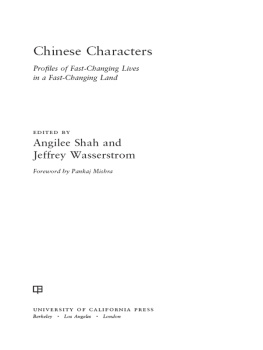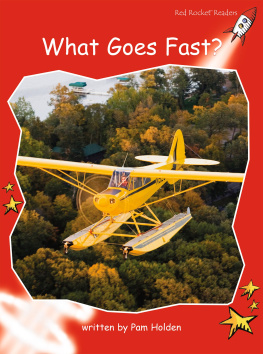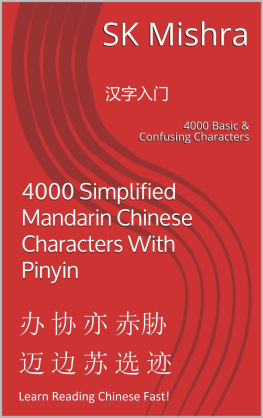Shah Angilee - Chinese characters: profiles of fast-changing lives in a fast-changing land
Here you can read online Shah Angilee - Chinese characters: profiles of fast-changing lives in a fast-changing land full text of the book (entire story) in english for free. Download pdf and epub, get meaning, cover and reviews about this ebook. City: Berkeley;CA;China, year: 2012, publisher: University of California Press, genre: Detective and thriller. Description of the work, (preface) as well as reviews are available. Best literature library LitArk.com created for fans of good reading and offers a wide selection of genres:
Romance novel
Science fiction
Adventure
Detective
Science
History
Home and family
Prose
Art
Politics
Computer
Non-fiction
Religion
Business
Children
Humor
Choose a favorite category and find really read worthwhile books. Enjoy immersion in the world of imagination, feel the emotions of the characters or learn something new for yourself, make an fascinating discovery.
- Book:Chinese characters: profiles of fast-changing lives in a fast-changing land
- Author:
- Publisher:University of California Press
- Genre:
- Year:2012
- City:Berkeley;CA;China
- Rating:5 / 5
- Favourites:Add to favourites
- Your mark:
- 100
- 1
- 2
- 3
- 4
- 5
Chinese characters: profiles of fast-changing lives in a fast-changing land: summary, description and annotation
We offer to read an annotation, description, summary or preface (depends on what the author of the book "Chinese characters: profiles of fast-changing lives in a fast-changing land" wrote himself). If you haven't found the necessary information about the book — write in the comments, we will try to find it.
Shah Angilee: author's other books
Who wrote Chinese characters: profiles of fast-changing lives in a fast-changing land? Find out the surname, the name of the author of the book and a list of all author's works by series.
Chinese characters: profiles of fast-changing lives in a fast-changing land — read online for free the complete book (whole text) full work
Below is the text of the book, divided by pages. System saving the place of the last page read, allows you to conveniently read the book "Chinese characters: profiles of fast-changing lives in a fast-changing land" online for free, without having to search again every time where you left off. Put a bookmark, and you can go to the page where you finished reading at any time.
Font size:
Interval:
Bookmark:
The editors are grateful to the staff of the University of California Press for their support, and encouragement, especially to Reed Malcolm, who has worked with us closely throughout the project, and Sheila Levine, who was instrumental in the original conceptualization. We owe a large debt to all of the contributors, who made room in their busy schedules not only to write their chapters but also to respond to queries, brainstorm on various aspect of the book, and in, Pankaj Mishra's case, read the manuscript and carve out time, while finishing a book of his own, to write the Foreword. Tom Mullaney deserves a shout out for his contributions to a lively lunchtime brainstorming session on the book that ended with it being rechristened with its final title. We would also individually like to offer the following thanks:
Angilee Shah: My first experiences in China were possible because of a fellowship from Princeton in Asia, a program that gave me a practical, ground-level perspective on life in Asia and introduced me to the realities of one-party systems. I would especially like to thank PiA's executive director, Anastasia Vrachnos, for her support and insight. I am in debt as well to Anka Lee, who helped me access parts of China I could have never seen on my own and has been a sounding board and source of ideas for as long as I have worked on the country. Conversations with Anka, since we were editors together as students at the University of California, Berkeley, have helped shaped the kinds of narratives I seek and the questions I ask as an editor. Clayton Dube not only gave me my first job as an editor at AsiaMedia but has also been a mentor and a friend ever since. Brian Hu and Chi Tung gave me valuable feedback on chapters in this book and helped me work through ideas both conceptually and practically. Finally, I want to thank Sonia and Anil, Vicky and Joe, who always gave me a home and space to work while I transitioned from Asia back to the United States.
Jeffrey Wasserstrom: I am grateful to my China Studies and History colleagues at the University of California, Irvine, both graduate students and faculty, for providing an ideal setting in which to do the kind of work that makes books like this possible. In particular, I want to thank Ken Pomeranz, Kate Merkel-Hess, and Maura Cunningham, my main co-conspirators in the China Beat enterprise, since there is an integral connection between that blog and this volume; Catherine Liu, who has been an ardent supporter of campus events that bring scholars and journalists into dialogue; and Pierre Fuller who, despite the pressures of first-year teaching, gave me valuable advice on an early draft of the Introduction (as did Maura Cunningham). I am grateful as well to Jennifer Munger of the Journal of Asian Studies for serving as a thoughtful sounding board for ideas about the book, ranging from its contents to what its cover should look like, and to James Carter, who went over a draft of the Introduction with a fine-toothed comb. For inspiration from the other side of the Pacific and helping me find new ways to move between the world of the academy and the world of journalism and literature, I want to thank CET Academic Programs (http://cetacademicprograms.com) and also Michelle Garnaut and Tina Kanagaratnam of M on the Bund, the very special restaurant where the Shanghai International Literary Festival is held each year. Finally, as always, I am grateful to Anne Bock for, among many other things, introducing me to Ms. Liu in the 1980s and always being the first one to hear my storiesand letting me know which ones are worth telling a second time.
ANGILEE SHAH
I met with Megan Shank on the Upper East Side of Manhattan when we were making final revisions to this book. Over Darjeeling in delicate teacups, she explained compound annual growth rates and the ins and outs of an initial public offering. This quick lesson in finance was prompted by Ray Zhang, the founder of the car rental company eHi. Zhang had just told her that he planned to take his company public in the United States, and Shank realized that she needed to make some changes to her chapter.
It should not have come as a surprise: China's fast-changing lives don't slow down for book editors and contributors. We always knew that trying to pin down the stories of the protagonists of Chinese Characters would be an impossible task. The best we could do, we decided, was to narrate these lives as they were being lived in a fascinating moment in history. By the time this book reaches readers, we know, many things about the people in it will have changed.
When he initiated economic reforms in the 1970s, Deng Xiaoping envisioned prosperity as a bicycle for every household. Now Chinese citizens can ride a maglev train that breaks 250 miles per hour. The pace of change in China is so rapid, and the inequities and breadth of experiences so vast, that the human stories are unforgettable. Adam Hersh, an economist at the Center for American Progress, told me that what we are seeing in China is not newthe United States and Europe went through industrialization periods that parallel China's experience nowbut China's economic rise is, he said, the most rapid socioeconomic transformation in the history of human civilization.
Stephen Mihm, a historian of American economy and culture, explained further that China today is a lot like New York City in the mid-1800s, which began as a modest seaport and bloomed into a densely populated metropolis. In China, migrants are moving into cities, liberated from back-breaking farm labor. Some five hundred million people have been raised out of poverty since the 1980s, the greatest achievement in poverty reduction in the shortest amount of time ever. But like New York City's growth spurt, China's boom is not good news for everyone. In emerging economies, people's perspectives are skewed by where they stand. For some, like Ray Zhang and the artist-for-hire Chen Meizi, China's growth is an economic opportunity. For others, like Old Lady Gao and her son in their Beijing hutong, the boom has come with displacement and disenchantment. And for many, China's roaring economy has been a mixed blessing.
It is not just people's socioeconomic lives that are evolving. Identities in and around China are also being formed and reformed. As China takes greater strides into the rest of the world, trying to decide what constitutes Chinese for the purposes of this book was a challenge in and of itself. Is it a nationality, an ethnicity, a language? A film scholar once told me that in his field, they have begun to use the term Chinese-language cinema, instead of Chinese cinema, for precision's sake. How else could they distinguish between films from Taiwan or Singapore, or Chinese American films, often in Mandarin but not from the mainland? When Jeffrey Wasserstrom and I first began talking about this collection, we wrangled over what its boundaries would be. Could an expat or an immigrant teach us something about how people live in China today?
While I was waiting to board the plane that took me from my home in Los Angeles to New York, where I met with Shank, I got an e-mail from James Carter. His chapter's main character, the globalized monk Lok To, had passed away. There would be a wake on Saturday night and a funeral on Sunday in Queens. It just so happened that I was on my way to Queens, where I was to be a bridesmaid at the wedding of two Chinese American friends. After finishing tea with Shank on Friday afternoon, I took three trains to get out of trendy Manhattan and into Flushing. When I exited the subway an hour later, it was bright and humid. The sidewalks were spilling over with men and women carrying large grocery bags and students with giant backpacks. Pedestrians walked at varying speeds, sometimes slowly, maddeningly, arm-in-arm in the middle of the sidewalk. Vendors on the street side sold roasted nuts covered in caramelized sugar. The smoke mingled with the scent of seafood on ice and the sounds of fishmongers yelling their wares in Mandarin and Cantonese. Nothing could cover the smell of the pungent durian displayed by grocers under green and orange awnings. I had a half-mile to goand it would be slow goingdown Main Street to the wedding rehearsal in the Queens Botanical Garden. I felt as though I were walking down a boulevard in an Asian megacity. As I navigated the crowd, I was glad that, thanks to Carter, we could include the story of a monk from the Bronx in our China anthology.
Font size:
Interval:
Bookmark:
Similar books «Chinese characters: profiles of fast-changing lives in a fast-changing land»
Look at similar books to Chinese characters: profiles of fast-changing lives in a fast-changing land. We have selected literature similar in name and meaning in the hope of providing readers with more options to find new, interesting, not yet read works.
Discussion, reviews of the book Chinese characters: profiles of fast-changing lives in a fast-changing land and just readers' own opinions. Leave your comments, write what you think about the work, its meaning or the main characters. Specify what exactly you liked and what you didn't like, and why you think so.











